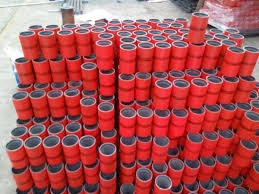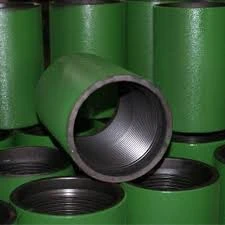1 月 . 22, 2025 04:53
Back to list
Tubing Coupling
In the world of oil and gas drilling, every component plays a critical role in ensuring efficiency, safety, and productivity. Among these components is the pup joint, a less talked-about yet indispensable tool. Understanding what a pup joint is and its significance in drilling operations can offer great insights for industry professionals and enthusiasts alike.
From an economic standpoint, pup joints contribute significantly to cost-efficiency in drilling operations. The ability to make precise adjustments without having to replace entire sections of piping reduces material costs and minimizes downtime. This efficiency is crucial in an industry where every minute of rig time translates to substantial financial implications. The expertise required to handle pup joints should not be underestimated. Handling and selecting the right pup joint involves understanding the well design, the materials’ specifications, and the environmental conditions of the drilling site. Moreover, it demands a thorough knowledge of the drill string dynamics and the ability to anticipate changes in downhole conditions. Operators and engineers need to work collaboratively to ensure that the right pup joint is selected, installed, and maintained throughout the drilling process. Trustworthiness and authority in the use of pup joints are established through adherence to industry standards and regulations, such as those set by the American Petroleum Institute (API). Compliance ensures that the pup joints are manufactured and tested to withstand the operational demands and that they contribute to the overall safety and efficiency of drilling operations. This compliance is an assurance to stakeholders that the equipment used will not fail under pressure. In conclusion, the pup joint, though small in comparison to other drilling components, is a cornerstone in optimizing drilling operations. Its applications are diverse and its impact on operational efficiency, cost reduction, and strategic flexibility cannot be overstated. Understanding and correctly utilizing pup joints involve a blend of experience, expertise, and adherence to industry standards. For companies striving to excel in the competitive landscape of oil and gas, mastery over every component, including the pup joint, is crucial. As the industry evolves, so too will the technology and application of these vital components, ensuring they remain a key piece in the drilling puzzle.


From an economic standpoint, pup joints contribute significantly to cost-efficiency in drilling operations. The ability to make precise adjustments without having to replace entire sections of piping reduces material costs and minimizes downtime. This efficiency is crucial in an industry where every minute of rig time translates to substantial financial implications. The expertise required to handle pup joints should not be underestimated. Handling and selecting the right pup joint involves understanding the well design, the materials’ specifications, and the environmental conditions of the drilling site. Moreover, it demands a thorough knowledge of the drill string dynamics and the ability to anticipate changes in downhole conditions. Operators and engineers need to work collaboratively to ensure that the right pup joint is selected, installed, and maintained throughout the drilling process. Trustworthiness and authority in the use of pup joints are established through adherence to industry standards and regulations, such as those set by the American Petroleum Institute (API). Compliance ensures that the pup joints are manufactured and tested to withstand the operational demands and that they contribute to the overall safety and efficiency of drilling operations. This compliance is an assurance to stakeholders that the equipment used will not fail under pressure. In conclusion, the pup joint, though small in comparison to other drilling components, is a cornerstone in optimizing drilling operations. Its applications are diverse and its impact on operational efficiency, cost reduction, and strategic flexibility cannot be overstated. Understanding and correctly utilizing pup joints involve a blend of experience, expertise, and adherence to industry standards. For companies striving to excel in the competitive landscape of oil and gas, mastery over every component, including the pup joint, is crucial. As the industry evolves, so too will the technology and application of these vital components, ensuring they remain a key piece in the drilling puzzle.
Next:
Latest news
-
Unlock the Benefits of Pup Joints for Your OperationsNewsOct.31,2024
-
The Quality of Casing Couplings from ChinaNewsOct.31,2024
-
The Essential Role of Pup Joints in Drilling OperationsNewsOct.31,2024
-
The Benefits of Tubing Couplings for Your ProjectsNewsOct.31,2024
-
Enhance Your Drilling Operations with Tubing Pup JointsNewsOct.31,2024
-
Elevate Your Drilling Operations with Tubing CrossoversNewsOct.31,2024
Related Products







